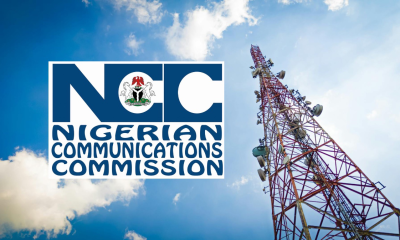The National Information Technology Development Agency (NITDA) has criticised government institutions for underutilising enterprise technology saying only 4.7 per cent of federal institutions use IT “in somewhat effective manner”.
In contrast, over 66 per cent of such institutions are at what the agency called “emerging stage” of IT utilisation, maintaining only websites “offering basic information online”.
The agency, which is responsible for formulating and supervising government’s IT policies, bemoans the low compliance with modern technology by government ministries and agencies.
NITDA’s director general, Isa Pantami, however said with the presentation of Nigerian Government Enterprise Architecture (NGEA) framework to stakeholders yesterday, the agency is setting the tune to changing the current reality.
He sought the support of the stakeholders, arguing that “public institutions for a big critical enterprise that must be managed efficiently to ensure its resources including IT are maximized to create value for stakeholders given the prevailing political, legal and administrative contexts.”
Mr Pantami, who was represented at the event by NITDA’s director of e-Government Development and Regulation, Vincent Olatunji, however, acknowledged improvement in IT systems of some public institutions which, he said, however, come with other challenges.
He listed some of the challenges to include inefficient IT environment, poor interoperability of IT systems, poor information sharing across agencies, maintenance of unnecessary multiple sites and unstandardized communication channels.
Other challenges he outlined are high cost of IT investments and poor sustainability of IT projects by host institutions.
“In addition to the previous challenges mentioned, ICT adoption and implementation in Nigeria naturally faces a lot of challenges ranging from inadequate basic infrastructure such as electricity, broadband and other digital technologies to insufficient human capital and the required skills in the public sector effectively implement and utilise ICT solutions.
“We also have unfriendly and weak institutions; inadequacy of finance for ICT projects as a result of competing demands and inability to properly align government businesses and ICT deployment, among others,” he said.
Mr Pantami said the implication of those challenges on the sector resulted in the inability of public institutions to fully translate national or organisational visions, policies and programmes into effective enterprise change and add value.
“This has prevented IT, to some extent, from becoming an asset shaping strategic future opportunities of public institutions and the government as a whole,” he said.
The official, however, commended ICT adoption as exemplified by the Treasury Single Account (TSA), Integrated Personnel Payroll Information System (IPPIS), Government Information Financial Management Information System (GIFMIS), Bank Verification Number (BVN), e-Taxation, e-Passport and e-Wallet system for farmers.
In his presentation on the draft NGEA document, Soji Adegunwa of Goldberry Systems Ltd said enterprise architecture is a recommended technology system that is being accepted by governments all over the world.
He said the adoption and harmonisation would help the government reduce costs in IT investment, as it cuts multiplicity and allows for collaboration.
He said with common platforms, there will be a reduction of “administrative headache” among agencies.
Mr Adegunwa also allayed fears of government institutions saying the technology is only making things more efficient without “taking powers away.”

 Latest1 week ago
Latest1 week ago
 Uncategorized7 days ago
Uncategorized7 days ago
 Business1 week ago
Business1 week ago
 Business6 days ago
Business6 days ago
 Politics3 days ago
Politics3 days ago
 News3 days ago
News3 days ago
 Crime5 days ago
Crime5 days ago
 Latest5 days ago
Latest5 days ago

